Top 7 Better Stack Alternatives for Api Monitoring and Observability
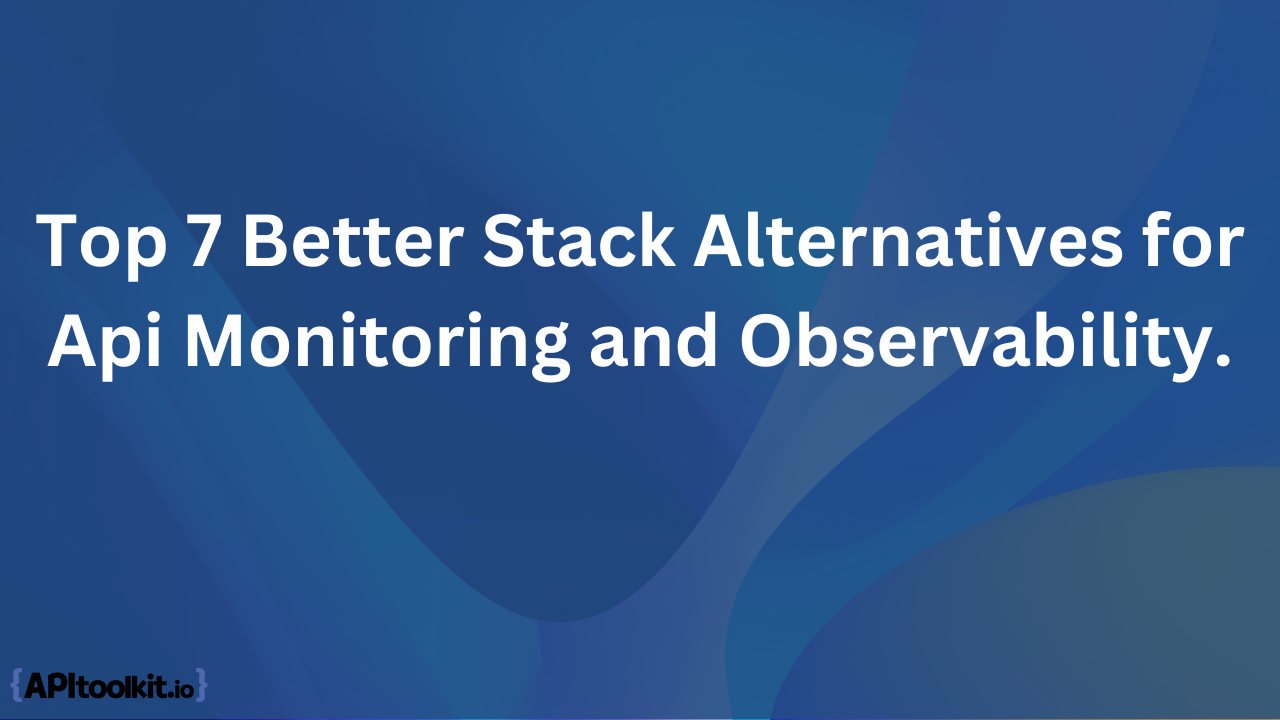
In today’s hyper-connected world, API act as a modern software, powering everything from seamless user experiences to critical business functions. But with great power comes great responsibility. Ensuring API reliability, performance, and security has become more crucial than ever. That’s where API monitoring and observability comes in, providing the vital insights needed to keep your APIs.
Current industry reports highlight the growing importance of robust API monitoring. For instance, a recent survey by Apiary found that 74% of developers consider API monitoring their top priority. This isn’t surprising, considering the staggering cost of API downtime. Gartner estimates that a single hour of API downtime can cost businesses up to $300,000.
While the popular “Better Stack” has served organizations well for general infrastructure monitoring, it often falls short when it comes to the nuances of API-specific needs. Its lack of built-in API functionality, complex setup, and limited real-time insights can quickly become roadblocks in a dynamic API landscape.
Fortunately, the software landscape has evolved, offering a plethora of ”Better Stack alternatives” specifically designed for API monitoring and observability. These cutting-edge solutions go beyond basic metrics collection, delving into the intricate world of API calls, traces, and logs. They empower you to:
- Pinpoint performance bottlenecks with granular granularity, identifying slow endpoints and optimizing response times.
- Proactively detect and diagnose issues before they impact users, ensuring a seamless and reliable API experience.
- Uncover security vulnerabilities and suspicious activity, safeguarding your data and preventing costly breaches.
- Gain deeper insights into user behavior and API usage patterns, driving continuous improvement and innovation.
Top 7 Better Stack Alternatives for Api Monitoring and Observability.
Let’s delve deep into the best 7 Better Stack Alternatives for API Monitoring and Observability.
1. APIToolkit
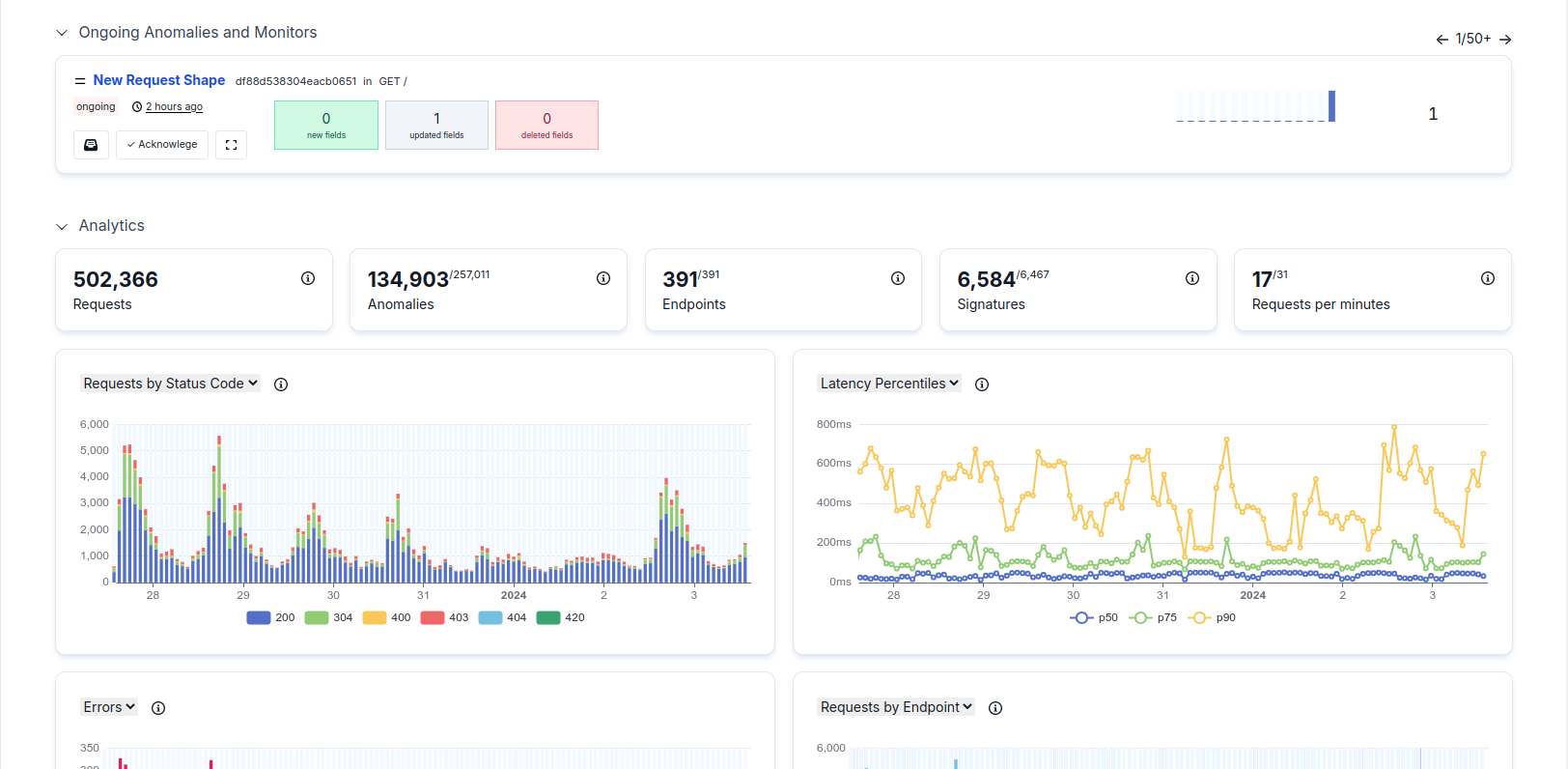
APItoolKit stands out as a frontrunner in API monitoring and observability, offering a user-friendly and comprehensive solution that surpasses the limitations of Better Stack. APItoolkit don’t only monitors but also observed, detect anomalies, generate upto date api documentation and specs, automatic changelogs, error analytics, and powerful weekly report on the state of your apis.
Don’t take our word for it. See how APItoolKit has empowered companies like Platnova and Thepeer to achieve unprecedented API performance and reliability. In Platnova’s case, APItoolKit helped them reduce API latency by 30%, while in Thepeer we helped them make a drop in rewrite of our PHP service in Golang. Fixing all bugs without customers noticing any changes.
Key Features
- AI-Powered Insights
- UptimeMonitoring
- Performance Monitoring
- Error Monitoring
- Advanced Tests
- Live Payload Validation
- Query Customer Activities,
- History requests
- API requests. And so much more
Pros
-
Ease of Use: Intuitive interface and pre-built dashboards for fast implementation.
-
Customizability: Allows users to customize everything from alert settings to test configurations
-
Real-Time Monitoring: Provides immediate visibility into API health and performance.
-
Analytics Dashboards: Facilitates data visualization and analysis.
-
Customizable Alerts: Triggers notifications based on defined thresholds.
-
AI Advantage: Data-driven insights and proactive problem prevention. Pricing: Free and Pay as you grow.
Cons
- The free version may lack some advanced features like live payload validation or custom query functionality.
Pricing
- Flexible plans starting at $20/month based on API calls and features. Free trial available.
2. Datadog
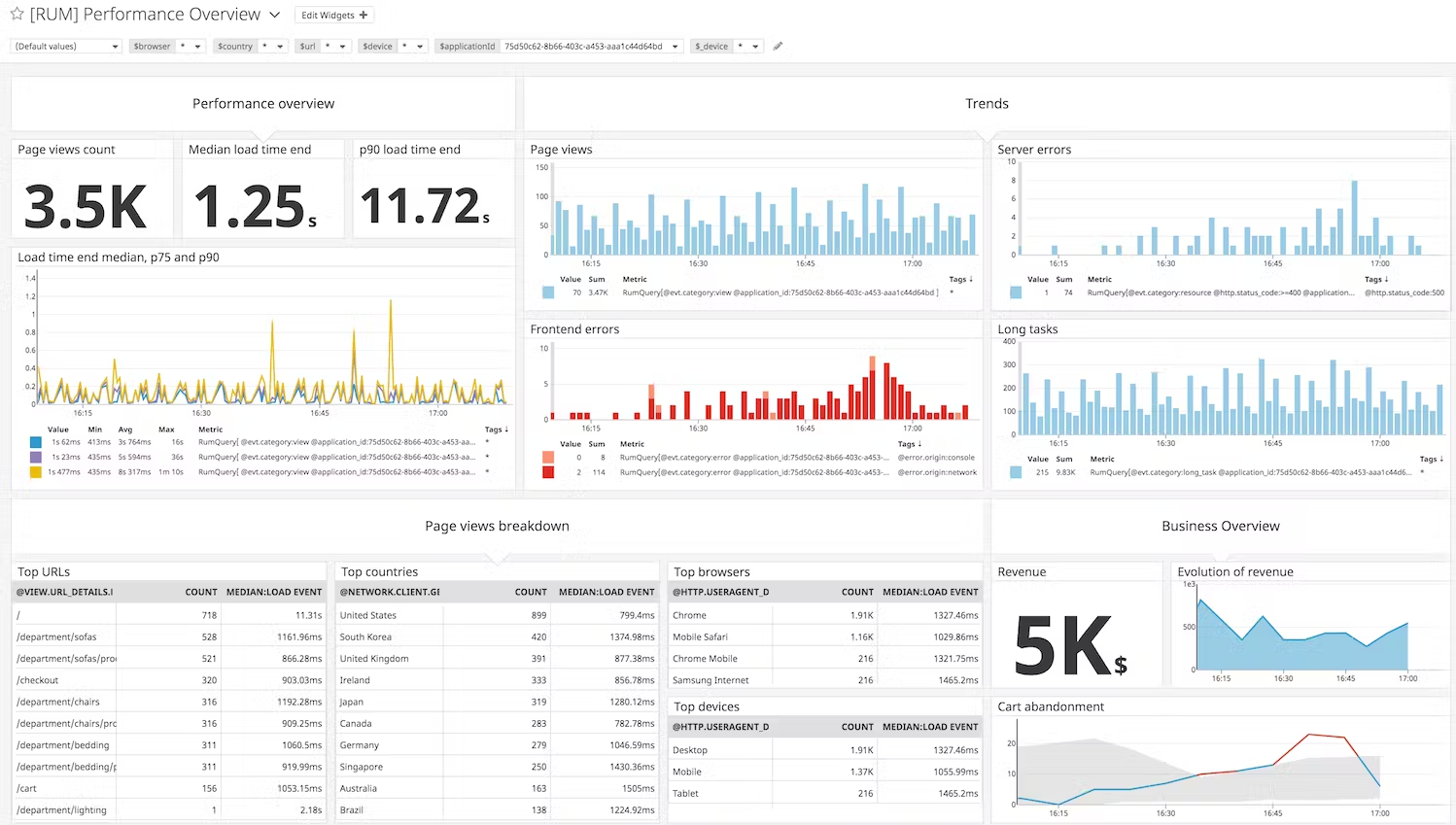
Datadog has established a reputation as a leading observability platform, providing comprehensive monitoring for infrastructure, applications, and now, APIs. While not exclusively focused on APIs, its versatility and enterprise-grade capabilities make it a strong contender for organizations seeking a unified solution.
Key Features
- API Endpoint Monitoring
- Metrics and Tracing for Microservices
- Anomaly Detection
- Incident Management
- Application Performance Monitoring (APM)
Pros
- Scalability Handles large-scale environments and data volumes effectively.
- Real-Time Monitoring Provides immediate visibility into API health and performance.
- Analytics Dashboards Facilitates data visualization and analysis.
- Customizable Alerts Triggers notifications based on defined thresholds.
Cons
- Complexity Installation and configuration can be challenging, requiring expertise.
- Limited API-Specific Features May not offer the depth of functionality as dedicated API monitoring tools.
- Cost Pricing can be steep for extensive usage and advanced features.
Pricing Customized plans based on usage and features, starting at $15/host per month. Free trial available.
3. New Relic
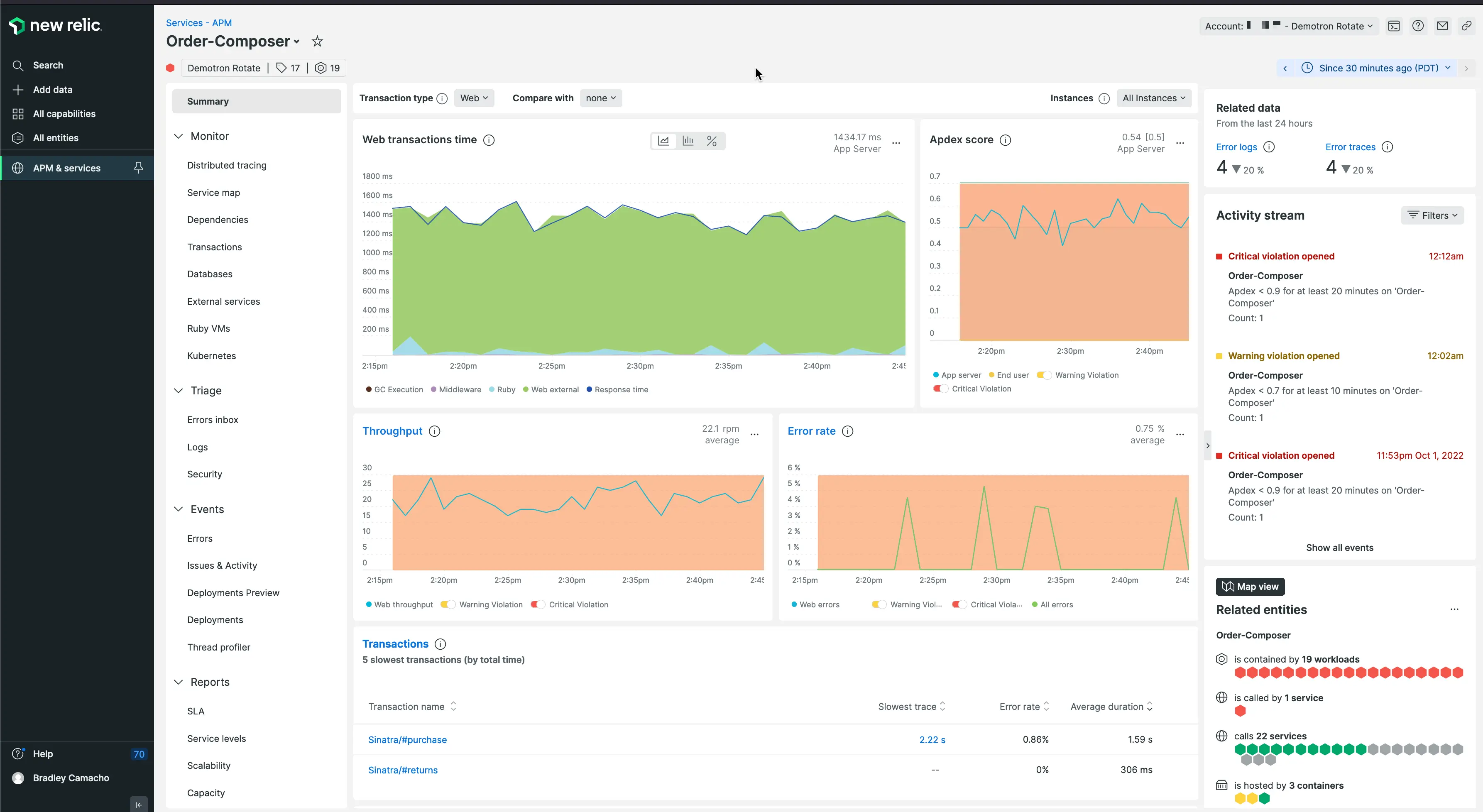
New Relic has long been a prominent player in the application performance monitoring (APM) space, and it has steadily expanded its capabilities to encompass API monitoring as well. While its primary focus remains on overall application health, it offers valuable insights into API performance and behavior, particularly within the context of broader application transactions.
Key Features
- API Gateway Monitoring:
- Transaction Performance Analysis:
- Anomaly Detection:
- Error Tracking:
- APM Correlation:
Pros
- Code-Level Visibility Dives deep into application code to identify root causes of API issues.
- Transaction Tracing Provides end-to-end visibility into API calls within application workflows.
- Custom Dashboards Allows for personalized data visualization and analysis.
- Strong APM Foundation Leverages a robust APM platform for comprehensive application insights.
Cons
- Limited API-Specific Features May not offer the same depth of functionality as dedicated API monitoring tools.
- Cost Pricing can be expensive, especially for large-scale deployments.
- Complex Setup Installation and configuration can be challenging, requiring expertise.
Pricing
Customized plans based on usage and features, starting at $99/month. Free trial available.
4. Dynatrace
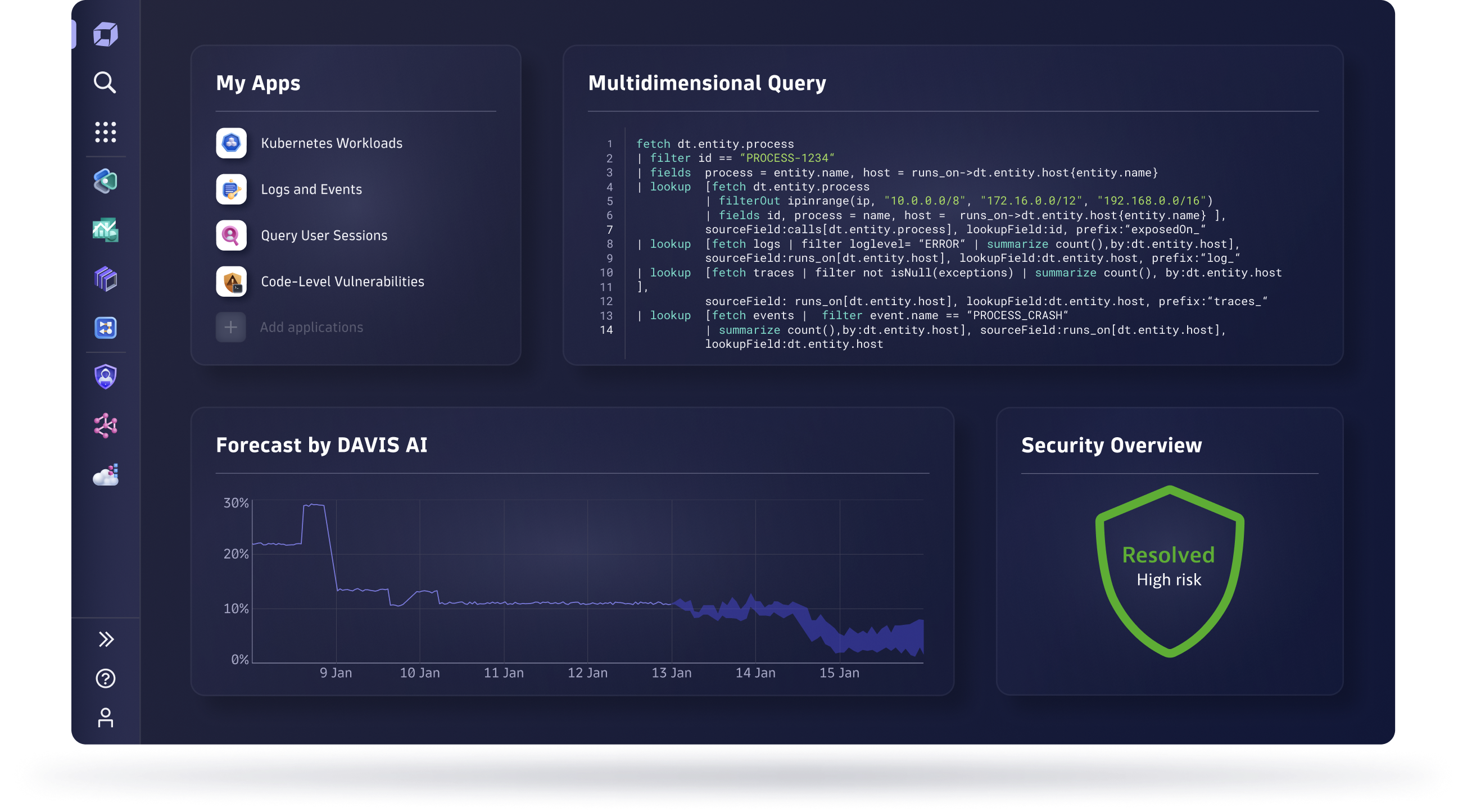
Dynatrace takes a decidedly AI-centric approach to observability, leveraging its powerful OneAgent technology to deliver deep insights and automated actions for both infrastructure and applications, including APIs. While its complexity might be higher than some other options, Dynatrace sets itself apart by proactively predicting and resolving issues before they impact users.
Key Features
- AI-Powered Root Cause Analysis
- Automated Remediation
- Continuous Optimization
- User Journey Tracing
- AI-Powered Recommendations
Pros
- Powerful AI Engine Delivers unparalleled automation and proactive problem-solving capabilities.
- Deep Visibility Provides granular insights into API behavior and performance across the entire ecosystem.
- Continuous Improvement Focuses on ongoing optimization and proactive risk mitigation.
- User-Centric Approach Prioritizes user experience and identifies potential friction points within API workflows.
Cons:
- Complexity Initial setup and configuration can be intricate, requiring specialized expertise.
- Entry Cost Higher pricing compared to some other options might be prohibitive for smaller organizations.
- Black Box Effect AI-driven decisions could require deeper understanding and transparency for some users.
Pricing
Customized plans based on usage and features, with pricing not publicly available. You need to contact Dynatrace for a quote.
5. Prometheus & Grafana
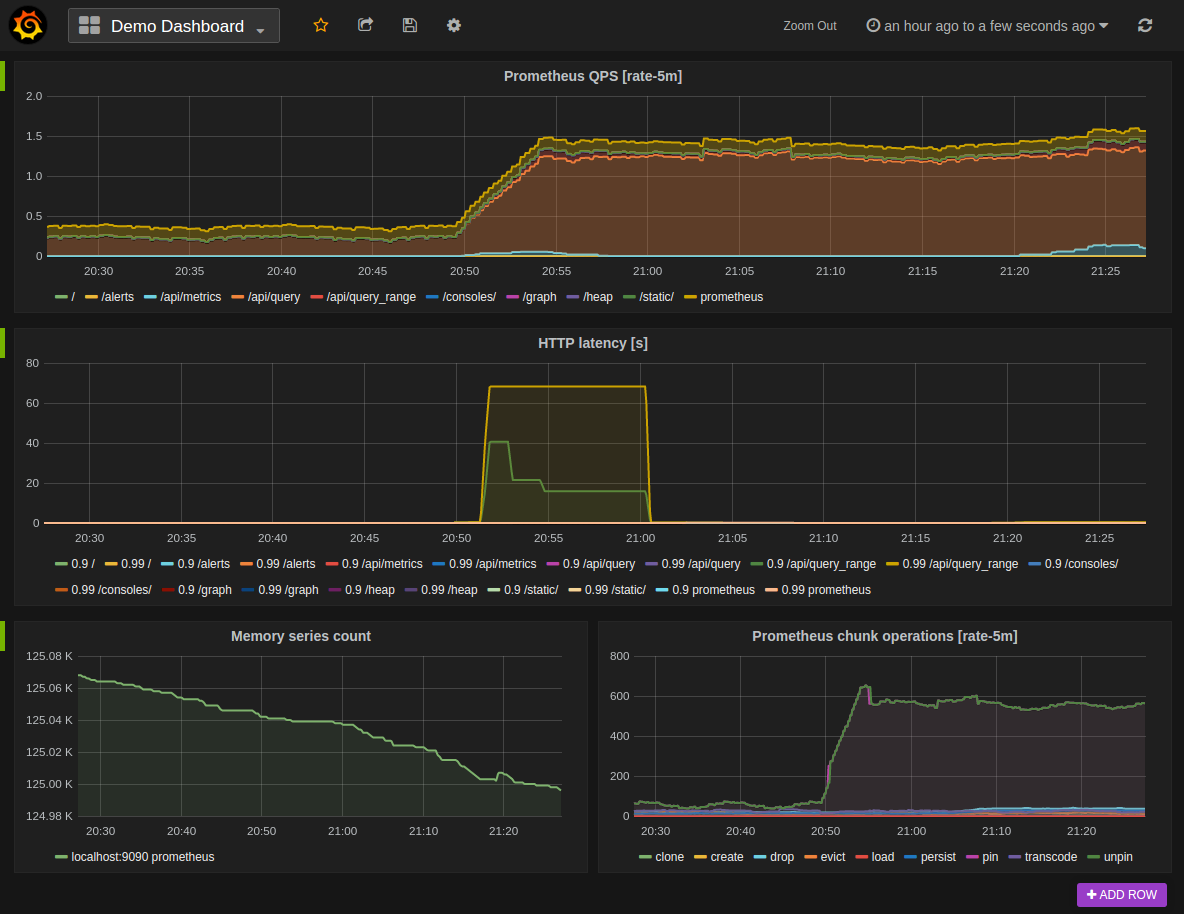 For organizations with technical expertise and a preference for flexibility, the open-source power couple of Prometheus and Grafana offers a compelling alternative. While they require more manual configuration and lack pre-built features, they provide granular control, community support, and cost-effectiveness, making them suitable for DIY enthusiasts and large-scale deployments.
For organizations with technical expertise and a preference for flexibility, the open-source power couple of Prometheus and Grafana offers a compelling alternative. While they require more manual configuration and lack pre-built features, they provide granular control, community support, and cost-effectiveness, making them suitable for DIY enthusiasts and large-scale deployments.
Key Features
- API Metrics Collection
- Custom Dashboards
- Alert Triggering
- Integration with Various Data Sources
Pros
- Flexibility and Control Configure and customize every aspect of your API monitoring setup.
- Community-Driven Support Leverage a large and active open-source community for guidance and support.
- Cost-Effective Open-source nature makes it ideal for budget-conscious organizations.
- Scalable Accommodates large-scale deployments and complex environments.
Cons
- Setup Complexity Requires technical expertise and significant effort for custom configuration.
- Limited API-Specific Features Lacks out-of-the-box functionalities for common API monitoring needs.
- Maintenance Burden Ongoing maintenance and community research needed for updates and support.
Pricing
Free and open-source. Additional costs may arise for custom integrations and tooling.
Comparison to APItoolKit
Compared to APItoolKit, Prometheus & Grafana offer greater control and cost benefits but involve more setup complexity and lack dedicated API-specific features. Their suitability depends on technical expertise and the desire for a customizable approach.
6. Jaeger & Grafana (OpenTelemetry)
.png)
For organizations deeply invested in distributed microservices architectures, Jaeger and Grafana, powered by the OpenTelemetry project, provide an open-source alternative focused on in-depth distributed tracing. While primarily concerned with tracing API calls across services, they require significant technical expertise and lack the out-of-the-box functionalities found in dedicated API monitoring tools.
Key Features
- Distributed Tracing
- Performance Analysis
- Dependency Visualization
- Root Cause Identification
Pros
- Deep Visibility into Distributed Systems Provides unparalleled insights into API call behavior across complex architectures.
- Open-Source and Community-Driven Leverages the power of OpenTelemetry and a vibrant community for support and innovation.
- Highly Customizable Grants control over every aspect of tracing and data collection.
- Cost-Effective Open-source nature makes it budget-friendly for technically proficient organizations.
Cons
- Setup Complexity Requires significant technical expertise for configuration and integration with OpenTelemetry.
- Limited Pre-Built Features Lacks out-of-the-box functionality for broader API monitoring needs.
- Maintenance Burden Ongoing effort needed for updates, support, and potential community research.
Pricing
Free and open-source. Additional costs may arise for custom integrations, tooling, and OpenTelemetry infrastructure.
Comparison to APItoolKit:
Jaeger & Grafana offer exceptional tracing capabilities for distributed systems but necessitate technical expertise and lack the ease of use and broader API monitoring features found in APItoolKit. Their suitability depends on specific needs and resources available.
7. Sumo Logic
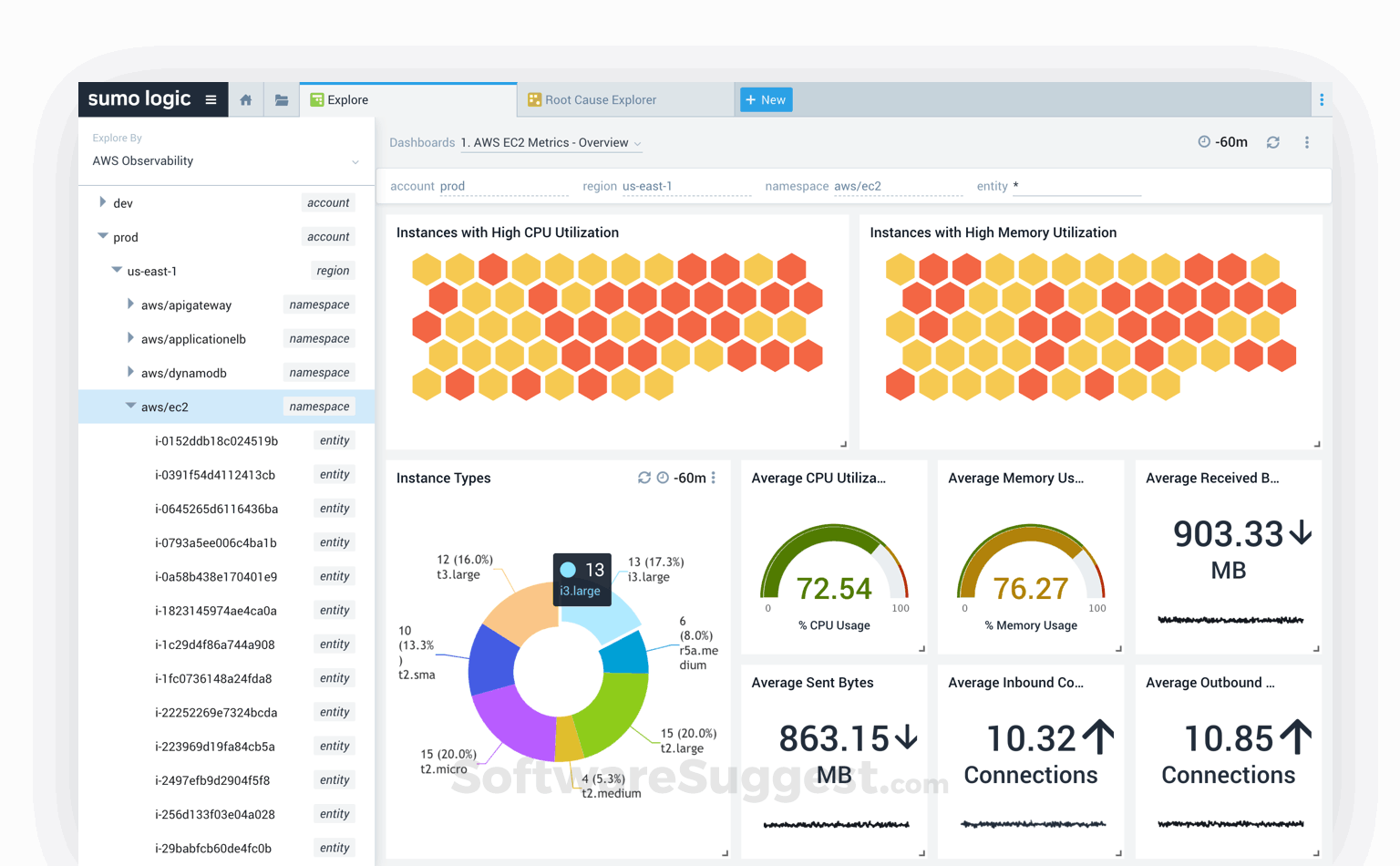
Sumo Logic takes a unique approach to API monitoring, focusing on centralized log management and real-time analysis. While it doesn’t offer dedicated API monitoring features like some other options, its powerful log ingestion, correlation capabilities, and AI-driven anomaly detection can provide valuable insights into API behavior and potential security threats. However, organizations may need to utilize additional tools for comprehensive API monitoring.
Key Features
- API Log Ingestion
- Log Correlation with Metrics and Traces
- Anomaly Detection for API Behavior
- Threat Detection and Security Monitoring
Pros
- Log-Centric Approach Provides deep historical analysis and insights based on API logs.
- AI-Powered Insights Leverages AI to identify anomalies and proactively detect issues.
- Comprehensive Security Monitoring Offers valuable security insights alongside API performance data.
- Scalability and Flexibility Handles large-scale log volumes and adapts to diverse environments.
Cons
- Limited Out-of-the-Box API Monitoring Features Requires integration with other tools for comprehensive API monitoring.
- Log Expertise Required Effective analysis requires understanding and interpretation of log data.
- Potential Additional Costs Integrating other tools for full API monitoring can increase expenses.
Pricing
Customized plans based on data ingestion volume and features, starting at $125/month. Free trial available.
Frequently Asked Questions
Q1. Which “Better Stack alternative” is the best for me?
A There’s no single “best” solution; it depends on your specific needs and priorities. Consider factors like:
- Technical expertise: Some tools require more technical knowledge than others.
- Budget: Pricing models vary from open-source options to premium subscription plans.
- Monitoring focus: Choose a tool that aligns with your primary needs, whether it’s overall API performance, distributed tracing, or log-based insights.
- Ease of use: Some tools offer pre-built features and user-friendly interfaces, while others require more configuration.
We recommend comparing the key features, pros, and cons of each alternative listed in this article to find the best fit for your organization.
Q. Can I use multiple “Better Stack alternatives” together?
A Yes, many organizations do! Some tools specialize in specific areas, so combining them can provide a more comprehensive view of your API performance and health. For example, you could use APItoolKit for core API monitoring, Datadog for broader APM needs, and Sumo Logic for log-based analysis and security insights.
Q. Is it worth moving away from the Better Stack for API monitoring?
A While the Better Stack (ELK Stack) has served many organizations well, it often falls short when it comes to API-specific needs. Dedicated API monitoring tools offer:
- Pre-built features: Focuses on API metrics, tracing, and security checks, eliminating the need for complex configuration.
- Deeper insights: Provides granular visibility into API performance and behavior.
- Improved user experience: Simplifies monitoring and troubleshooting for developers and operations teams.
Consider the limitations of the Better Stack for API monitoring and weigh the benefits of specialized tools before making a decision.
Q. I’m on a tight budget. Are there any free or open-source options?
A Yes, several open-source options like Prometheus & Grafana and Jaeger & Grafana (OpenTelemetry) are available. However, they require technical expertise for setup and customization. You may also need to invest in additional tools or infrastructure for comprehensive API monitoring.
Q: What benefits does APItoolKit offer compared to other alternatives?
A APItoolKit stands out for its user-friendly interface, comprehensive API functionality, AI-powered insights, and developer-friendly integrations. It simplifies API monitoring and observability, empowering you to:
- Pinpoint performance bottlenecks with granular detail and optimize response times.
- Proactively detect and diagnose issues before they impact users.
- Uncover security vulnerabilities and suspicious activity, safeguarding your data.
- Gain deeper insights into user behavior and API usage patterns to drive continuous improvement.
Q: Is APItoolKit suitable for organizations of all sizes?
A Yes, APItoolKit offers flexible plans starting at $20/month, making it accessible for startups and small businesses, while also scaling to meet the needs of larger organizations. Additionally, its free trial allows you to try before you buy.
Q: How does APItoolKit compare to open-source options like Prometheus & Grafana?
A While open-source solutions offer cost-effectiveness and customization, they can be complex to set up and maintain, requiring significant technical expertise. APItoolKit provides a pre-built solution with ease of use and dedicated API functionality, ideal for teams without extensive technical resources.
Conclusion
With the rapid evolution of software, APIs have become the lifeblood of modern applications, connecting systems and services in a complex dance. Ensuring their reliability, performance, and security is paramount for success. While the Better Stack (ELK Stack) has served us well for general infrastructure monitoring, its limitations become apparent when faced with the nuanced needs of APIs.
This guide has explored seven compelling alternatives offering a spectrum of options, from the user-friendly ease of APItoolKit to the deep distributed tracing capabilities of Jaeger & Grafana. Each tool brings its own strengths and weaknesses to the table, and the perfect choice will depend on your specific organizational needs, resources, and technical expertise.
Keep Reading
The Rise of API-as-a-Product: How Companies are Leveraging APIs to Drive Revenue
API Monitoring and Documentation: The Truth You Must Know
Writing API Documentation - Best Practices and Mistakes to Avoid